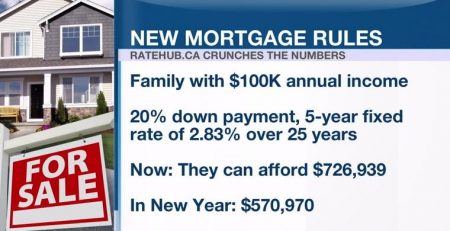Selling real estate? The CRA is watching
[July 18, 2019 – Advisor’s Edge]
When your client sells property, the transaction must be correctly defined and reported for tax purposes. Failure to do so may result in unwanted audits, potential back taxes, and related interest and penalties. Such negative outcomes occur regularly.
Last spring, the Canada Revenue Agency (CRA) announced updated results of its audits in the real estate sector, which resulted in over $1 billion in additional gross taxes since 2015. During the same period, CRA auditors reviewed over 41,700 files in Ontario and British Columbia (see tables below), resulting in over $100 million in assessed penalties.
Tables: Results of audit activities related to real estate from April 2015 to March 2019
Ontario
| Programs | Files completed | Audit assessments* |
| Income tax | 3,417 | $57.7 million |
| GST/HST | 1,816 | $155.1 million |
| GST/HST new housing/residential rental property rebates | 29,081 | $391.7 million |
| Total | 34,314 | $604.5 million |
*Source: CRA, May 2019; amounts include penalties assessed
British Columbia
| Programs | Files completed | Audit assessments* |
| Income tax | 1,656 | $266.6 million |
| GST | 1,438 | $136.5 million |
| GST new housing/residential rental property rebates | 4,306 | $19.5 million |
| Total | 7,400 | $422.6 million |
*Source: CRA, May 2019; amounts include penalties assessed
Looking specifically at last year, the CRA assessed $171 million more in taxes related to real estate than in the prior year—a 65% increase—and penalties more than doubled to over $57 million.
Clearly, the CRA is concerned about non-compliance in the real estate sector and has taken steps to curb what it deems to be inappropriate behaviour.
Tax on the sale of real estate
From a tax perspective, much of the discussion about real estate transactions focuses on two things. When appreciated property is sold:
- Is the transaction taxable?
- If yes, is the net profit taxed as business income or a capital gain?
The answers depend on circumstances. How a sale should be reported for tax purposes depends on a number of factors (see “Factors the CRA considers in an audit” below).
Since 2016, all property sales must be reported to the CRA, including that of a principal residence. The tax characteristics of the sale normally depend on whether the property was bought primarily to:
- live in as a principal residence,
- build or renovate, and sell (often referred to as a “flip”) or
- create rental income.
In the first scenario, your client buys a property to live in as their principal residence (or for a spouse, common-law partner or child to live in). When the property is sold, although the sale must be reported to the CRA on the client’s tax return for the year of sale, any resulting capital gain is often fully sheltered from tax because the conditions for claiming the principal residence exemption are satisfied, and the property was designated as such for each year of ownership.
Next, consider the case where your client buys a property (or buys vacant land and builds a property), takes possession and does some renovating. After the home is improved, the client sells the property, and the gains (or losses) form part of their income. The client may have lived in the property while making improvements; however, this doesn’t entitle them to the principal residence exemption if the intention was always to buy, improve and sell for profit. In this case, profits realized on the sale would normally be considered fully taxable business income.
Lastly, consider the case where your client buys a property primarily to earn rental income, which they pay tax on as it’s earned. When the property is sold, the profit would normally be taxed as a capital gain, subject to a 50% capital gains inclusion rate. If a property is used primarily as a principal residence but a portion is used to earn rental income, the property can be fully sheltered from tax using the principal residence exemption, provided that:
- the income-producing use is ancillary to the main use as a principal residence,
- there is no structural change to the property, and
- no capital cost allowance is claimed on the property.
Factors the CRA considers in an audit
During an audit, the CRA considers a number of factors to determine whether a property sale was reported correctly. These include:
- the type of property sold,
- how long the property was owned by the seller,
- the seller’s history of selling similar properties,
- whether the seller did any work on the property,
- why the property was sold, and
- the seller’s original intention in buying the property.
Understanding these factors can help clients appropriately define the nature of their property sales.
CRA’s ongoing strategy for tax non-compliance
Through experience and the use of third-party data, the CRA has aimed to gain a better understanding of non-compliant behaviour, leading to more audits and compliance actions. To support these efforts, the 2019 federal budget proposed providing the CRA with $50 million over five years and $10 million ongoing to create a Real Estate Task Force focused initially on the Toronto and Vancouver areas. The task force will focus on ensuring that:
- taxpayers report all sales of their principal residences on their tax returns;
- any capital gain derived from a real estate sale, where the principal residence tax exemption doesn’t apply, is identified as taxable;
- money made on real estate flipping is reported as income;
- commissions earned are reported as taxable income; and
- for Goods and Services Tax/Harmonized Sales Tax purposes, builders of new residential properties remit the appropriate amount of tax to the CRA.
According to the Department of Finance, expected revenue from this initiative is projected to be $68 million over five years, starting in 2019-20.
Correcting a previous return
Where a client has made a mistake or left out details about income on a tax return, they can request an adjustment using CRA Form T1-ADJ. Alternatively, for more complex scenarios and where significant penalties may be assessed, the Voluntary Disclosures Program may be appropriate.
Visit the CRA’s website for more on the agency’s plan to address non-compliance in the real estate sector.










